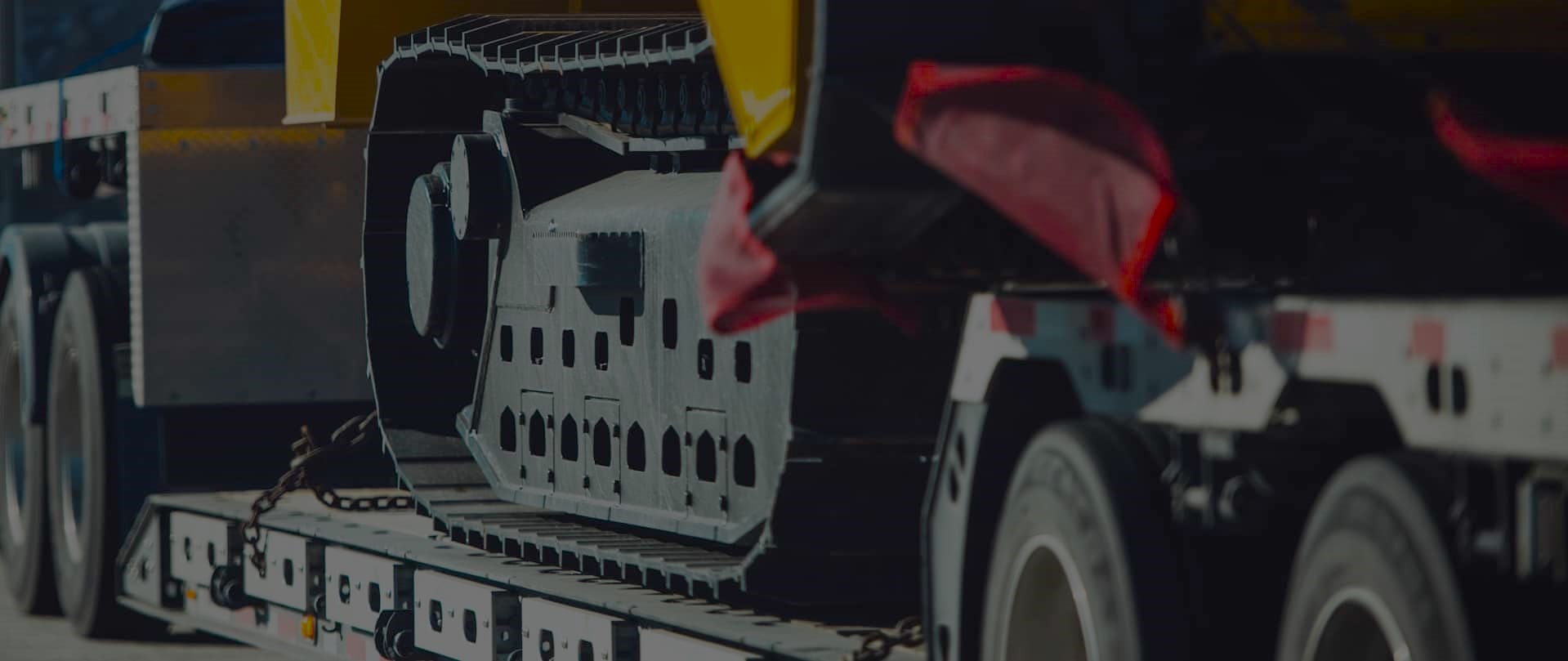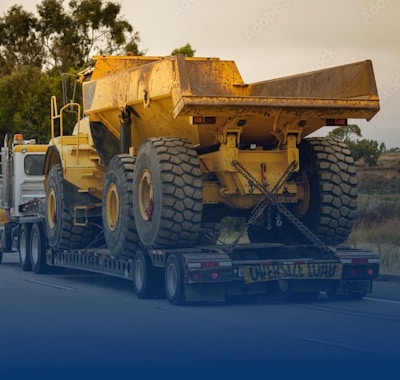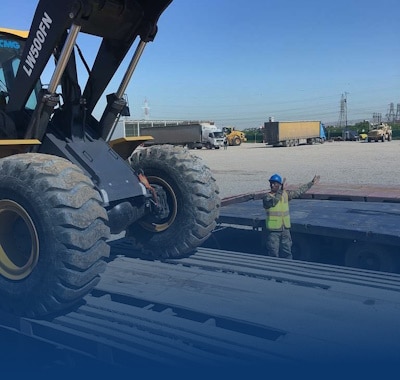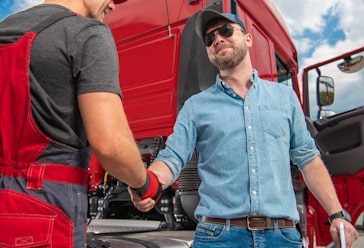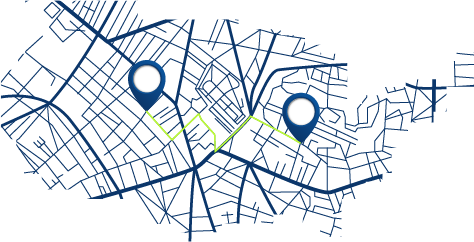Overcoming Heavy Haul Issues on Two-Lane Midwest Highways
Freedom Heavy Haul can offer expedited Pickup and Delivery for any size shipment anywhere in the USA. Contact us today for No Hassle, No Pressure Pricing.
Moving oversized loads along narrow country routes takes more than horsepower. It calls for careful route analysis, strict permit checks, and smart equipment choices. Drivers and dispatch must plan to avoid delays, damage, and safety risks.
Rural areas add layers of complexity. Long distances between services, limited shoulders, and tighter turns change how a truck handles. Each state enforces unique rules, so aligning permits, escort needs, and timing keeps teams compliant and safe.
Truck configuration, axle spacing, and chosen equipment affect turning, stopping, and bridge approaches. A proactive planning mindset helps carriers and pilot teams spot risks early and coordinate with local authorities when detours appear.
Good prep reduces surprises. With clear routes, reliable communication, and safety-first habits, companies protect cargo, meet schedules, and control costs on these narrow roads.
– Plan routes with state permit rules in mind.
– Match equipment and axle setup to road geometry.
– Prioritize safety and early coordination with authorities.
Why Two-Lane Rural Midwest Highways Raise the Stakes for Heavy Haul Today
Narrow pavement and tight curves make precise steering essential for large rigs on country routes. Limited shoulders and occasional gravel patches reduce recovery space and force exact lane control. That raises the risk of off-tracking and curb strikes.
Long distances between fuel and repair services increase the consequence of any misstep. Pre-trip planning for refueling, spare parts, and rest stops is more critical here than in urban corridors.
- Varying state permits and regulations create compliance complexity; one missed form can halt a route.
- Weight and axle geometry interact with local road conditions, increasing the chance of accidents at turns and bridges.
- Traffic may be light but unpredictable near towns, school zones, harvest activity, and work sites.
Drivers must balance load stability with surface conditions, weather, and sight distance. Verifying clearances and posted weight limits in advance prevents time-consuming backtracks and costly delays.
Early recognition of these factors leads to smarter route choices, fewer unsafe stops, and a more reliable schedule across state lines.
Challenges of heavy haul on two-lane rural Midwest highways
Narrow lanes and tight curves turn routine routing into a precise steering exercise for long trailers. Tight curvature, soft shoulders, and limited sight distance raise off-tracking risk when two large vehicles meet. That increases the chance for curb strikes and lane encroachments.
Low-clearance bridges and weight-posted spans are frequent hazards. Missing a posted height or weight sign can cause severe damage to cargo and to infrastructure, trigger accidents, and force long detours that wreck schedules.
Sparse service points and long distances between truck stops complicate fueling and HOS compliance. Drivers must plan stops that can handle oversized loads and fit legal hours.
Night driving adds risk: poor lighting, reduced visibility, and wildlife crossings raise the odds of sudden braking and loss of control. Add wet or frozen surfaces from bad weather and road conditions worsen quickly.
| Risk | Why it matters | Immediate effect | Mitigation |
|---|---|---|---|
| Tight curves & narrow roads | Amplifies steering and off-tracking | Lane encroachment, curb strikes | Route modeling, pilot vehicles |
| Low bridges & posted weight | Causes structural collisions and fines | Cargo damage, traffic closures | Verify clearances, pre-trip checks |
| Sparse service & long distances | Limits refuel and rest options | HOS slips, stranded vehicles | Service directory, timed stops |
| Poor lighting & wildlife | Reduces reaction time at night | Sudden braking, accidents | Limit night driving, extra lighting |
The Cost of Getting It Wrong: Safety, Delays, and Infrastructure Damage
A single routing error can trigger a chain reaction that harms people, property, and timetables. Poor route selection may cause collisions with low-clearance bridges, violations on weight-posted spans, and tight turns that are hard to navigate.
Accidents from clearance misreads and tight geometry
One clearance mistake can cascade into serious accidents that damage cargo, equipment, and public structures. That creates claims, emergency response needs, and long-lasting safety concerns for crews and nearby residents.
Traffic backups, detours, and timeline slippage
Stalled vehicles on narrow sections quickly create traffic backups and frustrated motorists. Last-minute detours inflate fuel burn, driver wages, and maintenance, producing delays that threaten on-time delivery and push drivers toward HOS limits.
Road and bridge wear, fines, and liability exposure
Infrastructure strikes bring steep fines and repair bills. Legal exposure can include restitution for road repairs and lost use. Near-misses also erode trust in planning and raise operational risk.
- Direct expenses: extra fuel, overtime, and accelerated wear that cut into margins.
- Operational impact: traffic and detours that ripple through the schedule.
- Legal exposure: fines for posted-weight violations and liability for repairs.
Document lessons learned after any event. Disciplined planning and verification are the best insurance against compounding operational and financial damage to infrastructure and fleets.
Route Planning That Works on Two-Lane Roads
Smart mapping and realistic timing cut surprises that slow moves and spike expenses. Good planning improves safety, avoids closures, and trims fuel use and schedule risk. It also helps drivers stay within HOS limits and reduces fines tied to weight and clearance errors.
Balancing highways vs. local streets
Mixing high-speed corridors with select local links can shorten miles while keeping legal alignment with regulations. Use major routes where clearances and service options exist, then shift to local streets only when they offer a safer or shorter path for vehicle and loads.
Pre-trip inspections and clearance checks
Verify bridge heights, posted weight limits, construction zones, and service yards that can handle wide rigs. Confirm escort car needs and permits with the state well before departure to prevent last-minute scrambling.
Backup paths for closures and emergencies
Build at least two contingency routes. Keep them updated with construction bulletins and traffic alerts so drivers can pivot without long delays.
- Step-by-step planning: legal alignment, clearance verification, and fueling windows tailored to vehicle size.
- On-the-ground checks: inspect bridges, tight turns, and village centers to avoid traffic pinch points.
- Final review: walk through the plan with the driver to confirm timing, risks, and service stops.
Permits, Escorts, and Travel Windows Across Midwest States
Before a single mile is driven, planners must lock in permits and confirm escort rules for every state the load will cross. Clear paperwork and the right support vehicles keep moves legal and on schedule.
Securing single-trip vs. annual oversized permits
Single-trip permits suit one-off loads or unpredictable corridors. Annual permits fit regular, repeat movements and cut processing time. Choose based on frequency and route predictability.
Pilot cars and escort vehicle mandates
Many state regulations trigger escort requirements when size, weight, or length exceed thresholds. Pilot cars help manage tight turns, narrow bridges, and complex intersections. Confirm the number and equipment for cars and vehicles before departure.
Travel windows and seasonal limits
Most states limit moves to daylight and restrict weekends or holidays to reduce traffic conflicts. Seasonal rules — thaw or harvest windows — can close routes or add weight limits. Complete permit applications with precise load and route details to avoid denials or fines.
- Verify escort equipment: lighting, signage, and radios.
- Build a permit calendar per state to track expirations and blackout dates.
- Keep a centralized record of approved routes and escort performance for future planning.
Weather and Seasonal Factors That Reshape Rural Heavy Haul
Seasonal weather swings reshape what routes are safe and which must wait. Storms, thaw restrictions, and high winds change how a move proceeds. Planners must build weather-aware plans that protect crews, cargo, and public infrastructure.
Storms, thaw-season weight limits, and wind-sensitive loads
Midwest thunderstorms, sudden snow bursts, and gusty crosswinds make steering wide trailers harder on narrow corridors. Wind-sensitive loads may need speed cuts or a temporary stop to avoid tipping or loss of control.
During thaw season, posted weight limits often drop. That can force a rework of the approved route or a pause until pavements harden.
Real-time weather alerting and safe shutdown criteria
Use live weather systems to track storm cells, closures, and changing road conditions. Quick alerts help crews reroute and cut delays without compromising safety.
“Set clear go/no-go rules—based on wind, visibility, and pavement state—so decisions stay uniform across the convoy.”
- Schedule departures to avoid forecasted bands and reduce idle expenses.
- Keep pre-permitted alternates ready so a posted segment doesn’t halt the move.
- Coordinate with state advisories and re-check lashings after any severe event.
Technology Stack for Safer, Faster Rural Moves
Modern tools let planners spot clearance risks and reroute before a truck reaches a low span. AI and mapping reduce guesswork and speed decision making for complex moves.
AI-based logistics and digital mapping
AI-driven planning engines evaluate restrictions, traffic, and posted limits to propose a route that avoids low bridges and weight-restricted segments.
Mapping layers visibly flag clearances, posted weights, and narrow segments so drivers can learn the plan before they roll.
Tracking, telematics, and offline navigation
GPS and telematics feed real-time location, speed, and stops to dispatch. When service is sparse, offline maps keep navigation and logs working.
Weather integrations for proactive detours
Weather alerts tie into routing tools to trigger detours ahead of storms. That protects cargo, saves time, and keeps schedules intact.
“Pair technology with hands-on checks—tools amplify planning but never replace clearance verification.”
- Driver-facing apps with simple UIs cut cognitive load and support safe lane control.
- Archived route data helps carriers refine planning, timing, and safety over time.
- Test multiple navigation and compliance apps so teams have redundancy in sparse areas.
| Tool | Primary Benefit | When to Use | Outcome |
|---|---|---|---|
| AI planning engine | Evaluates restrictions and traffic | Pre-trip and last-minute reroutes | Fewer clearance conflicts |
| Digital mapping layers | Shows clearances and postings | Route review and driver briefings | Better on-road choices |
| GPS & telematics | Live position, speeds, performance | All moves, with offline fallback | Improved dispatch decisions |
| Weather feeds | Early detour triggers | Storms, wind events, thaw windows | Safer schedules, protected cargo |
Driver Readiness: Skills and Strategies for Two-Lane Heavy Haul
Good drivers pair route knowledge with steady control when tight turns and narrow lanes limit recovery space. Prep starts before the road. Plan rest, refuel, and stops that accept oversized rigs so a driver stays legal and alert.
Managing turning radius, braking distance, and pace
Pre-run key turns on maps or video so drivers know exactly where overhang and trailer swing will reach. Translate turning radius into a step-by-step steering plan for the specific truck and vehicle setup.
Respect extended braking distances. Slow early for descents, bridges, and blind approaches. A steady pace that matches sight distance reduces sudden maneuvers and lowers the chance of accidents.
Fatigue mitigation on long stretches with few services
Optimize route timing to align rest with certified pull-offs. Use HOS windows to schedule breaks at oversized-friendly stops.
- Coordinate with escorts via clear radio calls before complex maneuvers.
- Perform walk-around checks at planned stops to catch lashings, tires, and axles early.
- Emphasize hydration, simple nutrition, and short activity breaks to maintain alertness.
| Focus | Action | When | Benefit |
|---|---|---|---|
| Turning radius | Pre-run on mapping/video; mark steering points | Pre-trip & approach | Fewer curb strikes, smoother turns |
| Braking distance | Reduce speed early; keep margin on descents | Always near grades or bridges | Lower accident risk, safer stops |
| Fatigue control | Scheduled breaks, nutrition, HOS alignment | Long rural stretches | Improved alertness, fewer errors |
| Escort coordination | Clear radio protocols, advance briefings | Before tight or constricted segments | Smoother maneuvers, safer passing |
Risk Hotspots Unique to Rural Midwest Areas
During harvest, local traffic patterns shift quickly as farm machinery and trucks share narrow lanes. Slow-moving equipment near elevators or processing plants compresses maneuvering room and raises operational risk.
Farm equipment traffic and seasonal harvest surges
Expect delays and tight passes. Plan for convoys to meet tractors, grain wagons, and harvest trailers. Call ahead to local authorities when passing through small towns where turning swing and clearances are tight.
Construction zones, temporary detours, and gravel segments
Work zones can reduce lanes and add gravel connectors that change stopping behavior. Loose surfaces and dust shift loads if drivers use hard throttle or late braking.
“Plan routes with seasonal activity and temporary postings in mind to avoid last-minute reroutes and fines.”
- Check state advisories and temporary postings that change weight and timing rules.
- Adjust routes so distances between safe pull-offs fit the convoy’s stopping plan.
- Schedule to avoid peak local traffic windows and keep the route flowing.
- Use calm, patient driving and clear signaling to reduce the risk of accidents around constrained features.
| Hotspot | Primary risk | Immediate effect | Mitigation |
|---|---|---|---|
| Harvest corridors | Slow farm equipment and surge traffic | Compressed passing space; delays | Call ahead; stagger departures |
| Temporary detours | Changed geometry and fewer lanes | Unexpected tight turns; reroutes | Verify notices; update route plans |
| Gravel connectors | Poor traction and uneven transitions | Load shift; longer stopping distance | Reduce speed; smooth throttle/braking |
Smart Cost Control Without Cutting Safety
Controlling per-move spending starts with route choices that keep miles, idling, and delays to a minimum. Effective planning picks legal, practical roads that save fuel and reduce time wasted in traffic or at toll points.
Fuel and toll minimization with legally approved paths
Choose the shortest practical route that also meets state regulations and permits. This lowers fuel use and idle time without risking fines or re-routes.
Avoiding fines and re-routes through meticulous compliance
Verify clearances and postings before departure. Meticulous paperwork and permit checks prevent last-minute detours that inflate expenses and break schedules.
Reducing wear-and-tear via terrain-aware planning
Match truck setup and equipment to terrain. Moderate grades, smooth throttle, and avoided rough segments cut brake heat and chassis wear.
- Document oversized-friendly refueling stops to protect cargo and keep drivers within HOS windows.
- Schedule to miss known congestion points so routes stay consistent and on time.
- Partner with carriers that share performance data to refine assumptions and lower per-move costs.
Time discipline and maintenance-friendly routing pay off over a season. Small savings per trip compound into meaningful reductions in costs, risks, and downtime.
Common Mistakes to Avoid on Two-Lane Heavy Hauls
Small oversights in pre-trip checks often turn steady hauls into costly, time-consuming incidents. Missing a posted bridge height or an axle posting forces reversals, fines, and accidents. Verify clearances and posted weight well before departure.
Ignoring road and bridge restrictions until arrival
Arriving at a posted bridge without prior verification is a leading cause of accidents and delays. Walk or map-check tight turns, low spans, and construction zones that can block a route.
Underestimating weather and skipping plan B routes
Weather can close small roads fast. Build at least one contingency route that is pre-checked for postings and timing. That prevents sliding schedules and unsafe stops.
Overlooking fueling and rest-stop feasibility for oversized rigs
Assuming service stops accept wide or heavy loads risks long delays and driver fatigue. Confirm oversized-friendly fuel and rest access to keep the driver legal and rested.
- Keep permits and load documentation accurate to match regulations and avoid enforcement setbacks.
- Re-check construction bulletins just before departure; new barricades can invalidate a plan.
- Brief drivers on narrow bridges, sharp turns, and downhill approaches so they know where to slow and call for support.
“Disciplined planning prevents repeat errors and keeps cargo protected, even when conditions change late in the game.”
Choosing the Right Heavy Haul Partner for Rural Routes
Picking a carrier with proven permit work and local routing skills saves time and prevents costly reroutes.
Start by verifying experience: look for carriers that show a track record handling state permits, escort coordination, and complex narrow-route planning. Ask for sample routes and references for similar size and weight moves.
Experience with permits, escorts, and complex routing
Evaluate a carrier’s history with permit filings and escort deployment. Request case examples that confirm they can align permits and regulations with timing so a truck arrives ready and compliant.
Proven technology, transparent communication, and fast response
Technology matters. Choose companies that use digital mapping, live tracking, and documentation so dispatch and drivers share the same validated route. Fast callbacks and clear updates reduce downtime.
Why shippers value personal attention and reliability
Shippers praise Freedom Heavy Haul for personal attention and immediate responses. Customers like Bilbo Baggins, Tim Allen, John Armstrong, and Elizabeth Martin highlight quick communication and consistent delivery.
“Freedom Heavy Haul finds the best price and calls back fast — that reliability makes a real difference in tight moves.”
- Ask for references on similar heavy loads and rural case studies.
- Confirm equipment matching: axle setups, support gear, and truck specs for the route.
- Compare total value: safety, schedule reliability, and problem-solving versus rate alone.
| Partner Trait | What to Check | Why It Matters | Expected Outcome |
|---|---|---|---|
| Permit & escort experience | Sample filings, state approvals | Ensures legal, timely moves | Fewer detours and fines |
| Technology stack | Mapping, tracking, docs | Real-time route validation | Faster decisions, clear audits |
| Equipment expertise | Axle configs, trailers, support gear | Matches truck to route limits | Reduced field surprises |
| Customer service | Response times, references | Trust during plan changes | Predictable costs and delivery |
Moving Forward with Confidence on America’s Two-Lane Midwest Highways
Finish strong, by blending clear planning with the right tools and field checks so teams move large loads through tight country roads with steady confidence.
Use GPS, digital maps, and weather alerts to protect safety and cut time lost to surprises. Confirm permits, escort needs, and service stops before departure to guard delivery windows and reduce stress for drivers and vehicles.
Keep communication calm during a change. Small timing shifts and patient driving lower traffic conflicts, limit delays, and prevent accidents. Capture lessons after each trip so trucking performance and on-time delivery improve over the season.
